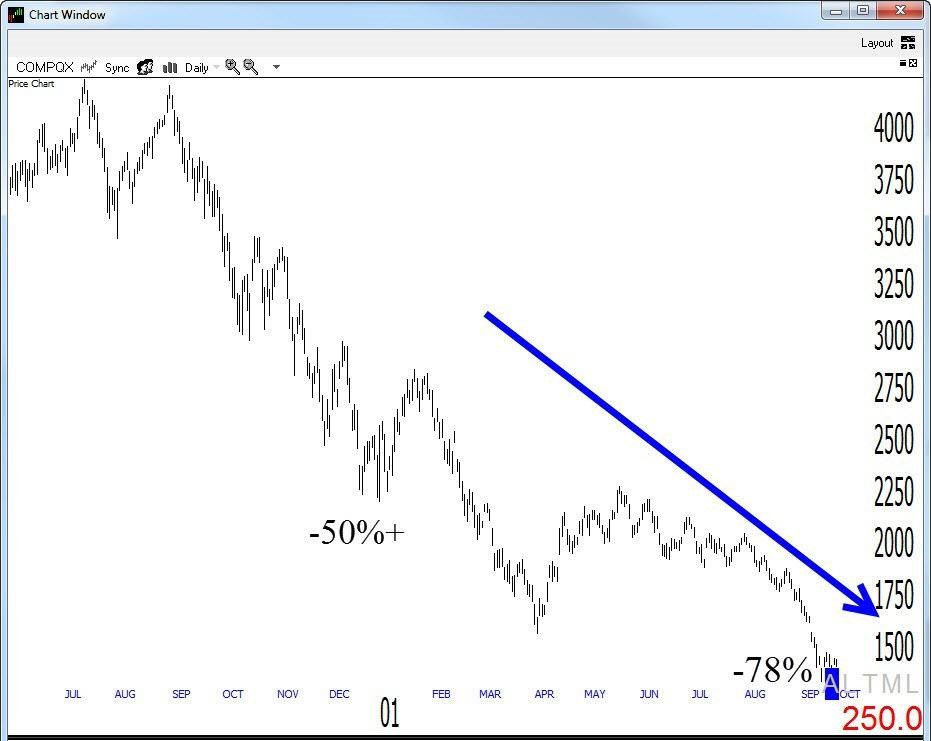It’s okay to sit on your hands—and cash. Sometimes return of capital is better than return on capital. With the market becoming a little iffy, I updated this article, says Dave Landry, founder and president of DaveLandry.com. More Trading Lessons Friday on MoneyShow.com.
Based on the interactions during my Thursday Chart Show, it seems that the waiting for trends is creating some performance anxiety out there. “Cash is trash!” was one of the statements made. Relax.
Cash is not trash. That’s a cutesy saying, but it simply isn’t true. Things that rhyme are more likely to be believed, whether they are true or not. Exhibit A: “If the glove doesn’t fit, you must acquit.”
It’s okay to sit on your hands—and cash. Sometimes return of capital is better than return on capital.
“There’s got to be somewhere that I can park my cash!”
Well, I’m not going to spend my time trying to chase a .000015% yield vs. a .00001% yield (although they have risen a smidge since this was originally published). There’s plenty out there doing that. And, God bless ‘em for their hard work.
I’d rather focus my energies on the next big opportunities which will hopefully return many times that amount. Having the cash ready to pounce when those opportunities present themselves is a great position to be in.
The longer that I’m in this business the more I realize that there are no good longer-term investments, in spite of the diatribes of snake oil salesmen. Yes, something might have decent returns over a 50-80 year time horizon but channeling Sweet Brown: “Ain’t nobody got time for that!”
Further, what often happens in between is what kills you. Losing 50% to 80% of your investment can be demoralizing and devastating.
Wait, Big Dave, what about the “fact” that stocks always go up longer-term? Well, those metrics are based on an 81-year time horizon.
Get Top Pros' Top Picks, MoneyShow’s free investing newsletter »
Look no further to the last two bear markets. The S&P 500 (SPX), peak-to-trough, lost over half of its value in 2000 and again in 2008. During the same timeframes, the Nasdaq lost 78% and 55% respectively.
What about gold? Well, from the peak in 1980 it lost over 80% of its value over the next 20 years. And, in more recent times, assuming that December 2015 is the bottom, it has lost 45% since the August 2011 peak. (Update: gold subsequently bottomed in 2016, so far, for a loss of nearly 50%.)
Real estate? Well, we all know what has happened here over the past several decades. Yes, I think that everyone should own the roof over their heads (for numerous reasons), but other than that, it’s not a good longer-term investment.

During the 2001-2002 bear market, the Nasdaq lost over 78% of its value.
As I often preach, all asset classes will lose half of their value at some point in your lifetime. In my short lifetime, I’ve seen many halves.
Longer-term investing vs. trading
So, that’s my short case for trading vs. investing. Now, trading doesn’t mean that I’m like the little rat hitting the button frantically for drugs.
I was asked in an interview about the length of my holding period. My reply: “at least 10 years, hopefully much longer.”
The reality is that the money and position management will take me out much sooner.
I firmly believe that you can only predict the short-term with any degree of accuracy but you can follow trends forever.
I’m slotted as a swing trader, probably based on the title of my first two books, but I will stay with trends as long as they move in my favor. I use a stop in case I’m dead wrong.
I take partial profits in case the move is only a short-lived one. And, I use a trailing stop just in case the trend does last 10 years, or longer!
May the trend be with you!
Dave Landry’s Trading Full Circle course videos and newsletter here





















